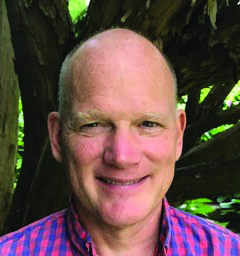LETTER from WAYNE MELLOR
What’s the cost of zero-carbon energy

I received several thoughtful comments from our readers concerning the last column and would like to address them.
The investment bank Lazard published the most recent Lazard’s “Levelized Cost of Energy and Storage” in late 2020. The comprehensive report includes all the costs of creating and storing a megawatt of power including land, construction, operating and maintenance.
According to the Lazard report, new, unsubsidized utility scale power sources have the following midpoint levelized costs per megawatt hour: solar $34, offshore wind $86, on-shore wind $40, nuclear $164 and combined cycle gas $59.
It is pretty easy to see that money drives political decision-making especially when deciding between new nuclear, wind and solar power. Offshore wind is relatively expensive, but unlike solar, it can occasionally generate base load power. The public is less likely to resist offshore wind, and one of the windiest places in the U.S. is off Long Island.
Upstate’s power supply is mostly from carbon-free nuclear and hydro. Downstate, where natural gas is used to generate most of the power, is the logical place to have a huge renewable wind energy facility.
It also makes some sense that we continue to build out utility scale solar facilities on cheap land near existing transmission lines that extend to New York City like the Marcy South line that bisects Otsego County. As more renewables are added, New York appears to be planning to use existing natural gas plants to provide reliable power on the grid when the wind doesn’t blow and the sun doesn’t shine.
The economic reason to keep our three aged, nuclear plants at this point is that once a nuclear plant is fully depreciated, the levelized cost drops to a very competitive $29 per megawatt hour.
These nuclear plants are vital to reaching the zero emission goal set out by New York by 2040 if we are not willing to quickly commit a great deal of land to renewables, build more natural
gas plants which seems counterintuitive to our zero carbon goal, and want to keep our electric rates down.
The New York Independent Service Operator is responsible for maintaining the market for power in New York. They are predicting that our peak usage will not change much from 2020 to 2040 even with the switchover to heat pumps and electric vehicles.
This is good news as it tells us that if our generating capacity presently works it will also work in the future. Keeping our existing power sources while switching over to renewables will maintain reliability. However, we ratepayers will be paying more at some point for new transmission lines, utility scale battery storage and more expensive intermittent natural gas generation.
The big question is will battery and smart grid technologies evolve to a point where we won’t need any more natural gas backup and a truly zero carbon future.
We are not there yet, but we have some time.
Wayne Mellor is the chair of Sustainable Otsego.


Excellent summary and conclusions. They should be heeded.